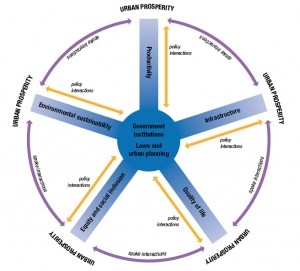The UK more and more often introduces solutions under the sustainable development framework. Successfully. However, the success does not come from top-down orders, but from the approach of the British themselves.
The Green Register has its seat in Bristol. It is a non-profit organization that aims to provide training sessions and cooperation of the association members in order to promote sustainable development concept in various spheres of private and business life.
The Green Register (or TGR) members are mainly architects and constructors. Three or four times a year they get together in London to discuss the activities of the organization. They also meet up in networking groups.
Training sessions held by TGR are addressed to both individuals and companies. The members are willing to share their knowledge and take part in events connected with ecology and sustainable development. The association also runs a website and a blog on the subject.
TGR’s activity is interesting not only due to the subject matter – from a perspective of Poland where waste segregation must be imposed by law, such actions look quite exotic. They seem to have nothing to do with events held by defenders of animal rights or waste-free rivers. TGR makes an effort to improve built environment – its quality, style, use and state-of-the-art solutions that do not ruin the environment and have a positive impact on people.
On the website one can find many interesting articles on ecobuilding. Here is one of them.
Daylight can help us to live more healthily
Architects are continuously on the look-out for the better insulation, the paint with no solvents, the more sustainable timber systems, and the new state of the art material. But natural light? We don’t give it the special attention it deserves, although it is a very special building material, is readily available, not owned by individuals or countries – and it is free.
In 1903 Professor Niels Finsen discovered that direct sunlight can heal tuberculosis. A few years later, the social housing revolution in Berlin, Vienna and Stuttgart (building with more ‘Licht und Luft’ – light and air) provided thousands of people in the 1920/30s with more appropriate housing giving them healthier lives.
The English Government also commissioned several reports which applied to council housing such as the Tudor Walters report, based on the principles of the ‘healthy’ Garden Cities movement (1918), and the Dudley Report (1944) which significantly increased space standards. Despite limitations and increased housing demand, the standards were generally high, with average space standards reaching their highest in 1949, but no reference to daylight provisions was made.
The Parker Morris standards and ‘Design Bulletin 6’ that then followed in 1963 focused on the ‘usability’ of space required to use and move around furniture and drew attention to useful door and window positions. These standards are still frequently cited even today as a good practice benchmark regarding space standards but were abolished in 1980 due to cuts in public expenditure, rising costs and increased densities in the cities which in turn led to windows becoming smaller.
By the early 1990s, a drop in Housing Association space and quality standards in England began to be identified by a number of research reports. New technologies such as high-tech materials, better insulation, framing systems, double and triple glazing etc. have since influenced the private housing market over the last decade but with not much effect on general daylight provision.
Numerous recent studies have shown that daylight increases our concentration and efficiency, reduces depression, improves our mood and general well-being and decreases stress and illnesses. Research at the Centre of American Academy of Sleep Medicine (2013) has revealed that not only office workers’ quality of life will be improved via emphasis on light exposure and lighting levels at their workplace but also the quality of their sleep. There could be a more far-reaching socio-economic connection – would we be healthier with more daylight in our homes and offices, so putting less strain on the health system, which in turn would free up more funds to build higher quality housing? So why is there still no legal requirement for daylight in offices and why are we still living in homes with small windows?
More daylight is more sustainable
Larger windows have undoubtedly advantages for our health and wellbeing and connect us more with nature and the seasons. Well positioned windows will help to save energy as solar gain during daylight hours can actually reduce heating costs and electricity bills. On the other hand, we need to consider their thermal performance and might want to collaborate with engineers to be able to balance the visual and thermal aspects better. It also needs to be considered that the light will only penetrate the space by about 6 meters so that roof lights might be more effective in certain areas.
As architects we have the possibility to advise our clients on the benefits of more daylight, push for larger windows and include roof lights in the top floors of our buildings. We have the power to introduce daylight in the darkest buildings, create atriums– or at least light shafts– to increase the well-being and ultimately the health of the occupants. Even the most unlikely buildings can be naturally lit, as proven for example at Southwark tube station in London where a glazed roof allows daylight to enter deep into the station and adds a shimmer of daylight to the often grim morning commute.
Understanding human needs and the effect that daylight has on our environment and ourselves should be equally important to providing functional buildings and fulfilling the brief – the use of daylight will enhance our schemes and has long-term benefits for both occupants and clients.






